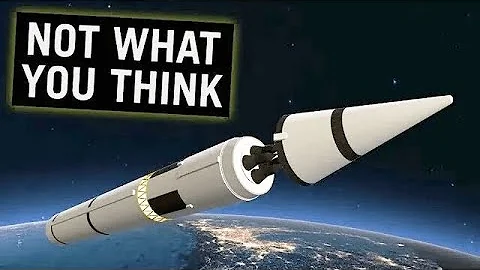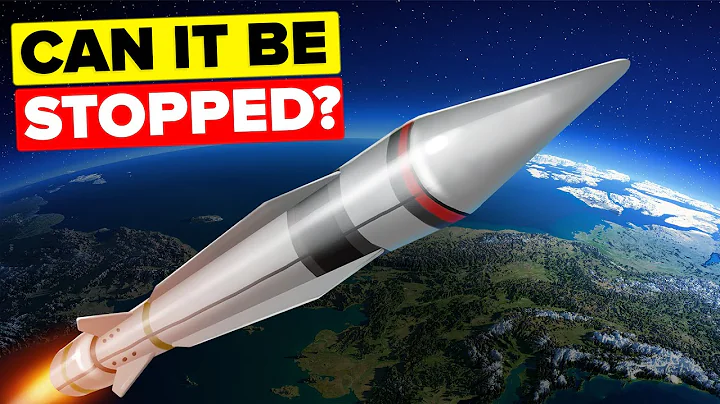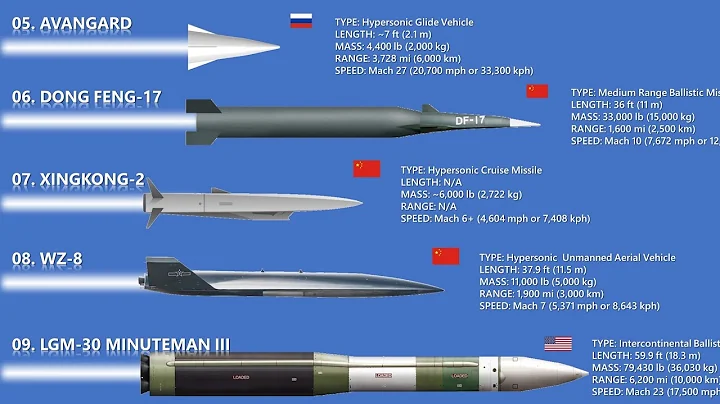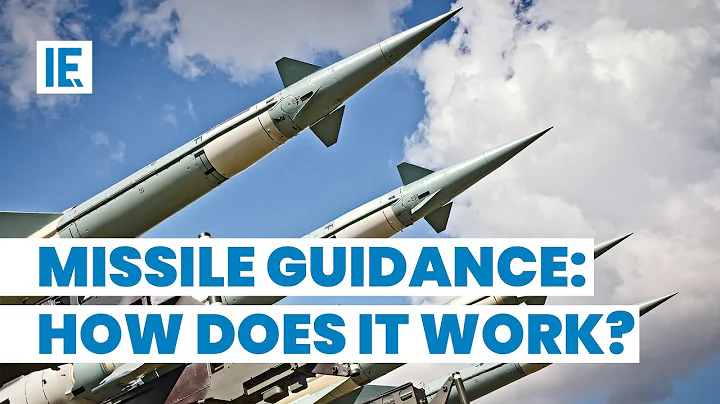
The mid-section anti-missile can be regarded as the first-class military high-tech on the earth today. After all, the difficulty of intercepting a bullet or artillery shell is N orders of magnitude higher than that of simply launching a bullet or artillery shell. The target of mid-section anti-missile can fly at a much greater speed and height than ordinary bullets or artillery shells. Especially for the successful interception of long-range missiles and even intercontinental missiles with a range of more than 5,000 kilometers and a terminal shutdown speed of 6,000 meters per second, it is a high-end version of mid-course anti-missile. In fact, there are only two major countries in the world today that have actually conducted complex mid-course anti-missile tests and have successful records. Moreover, the success rates of the two major countries are also very different. A certain party successfully tested 5 times out of 5 times. The superpower's multiple tests basically have a success rate of less than 50%. Of course, the superpowers have superior natural military and geographical conditions, so most of them act as targets for incoming missiles. All are directly simulated using real intercontinental missiles.

It’s just that these intercontinental missiles have dismantled the real nuclear warhead , and only used counterweights and decoys for testing; the initial separation distance between the incoming ballistics and the intercepting ballistics is often more than 8,000 kilometers, so regardless of the incoming ballistic missile, Whether it is a target missile or an interceptor missile, it is roughly based on the ballistic trajectory of actual combat. This allowed the superpower's mid-stage anti-missile to have a practical background from the beginning, but the difficulty was increased from the beginning, resulting in a low overall success rate for its tests. If you face only a few incoming intercontinental missiles, the probability of interception is less than 50%. If you face a larger-scale concentrated bombardment of intercontinental missiles, the actual combat value will be about the same, not to mention that it will return to zero instantly. After all, the damage caused by being hit by 500 intercontinental missiles on the mainland is not much different from being hit by 400 intercontinental missiles. However, a certain side's mid-course anti-missile attack is obviously more stable. It first started by intercepting medium-range missiles with a range of 3,000 kilometers, and used high-incoming ballistics that were relatively easier to successfully intercept. The angle between the trajectory of the incoming projectile and the interceptor projectile is also relatively small.

In short, it is to reduce the difficulty of early trials, pursue the success rate as much as possible, and obtain first-hand field trial data. After several trials, the difficulty gradually increased. In short, it is getting closer and closer to actual combat. And to a considerable extent, it has been able to achieve large-scale combat duty status. One party did not use it to intercept intercontinental missiles from the beginning. In addition to being more technically sound and reliable, a certain party is surrounded by a variety of close-range strategic forces. In the future, in addition to dealing with possible incoming intercontinental missiles, we must also pay attention to launched from the surrounding areas. Medium range ballistic missile . Such missiles may use nuclear warheads or conventional warheads. Therefore, the target missile used by a certain party from the beginning was a medium-range missile with a range of 3,000 kilometers, which shows that this kind of experiment also has a strong actual combat background. This is the fifth consecutive successful test. A huge improvement is that the incoming target missile intercepted this time has a maximum flight speed of more than 6,500 meters per second. It can also be regarded as a quasi-intercontinental missile.

Hanhai Langshan (Xiongnu Langshan) believes that the fifth successful interception, the biggest surprise is not the first successful destruction of a quasi-intercontinental missile. But the method of successful interception this time is probably fundamentally different from the previous four times. Before this test, whether it was a superpower or a certain party, regardless of whether the intercepted target missile was an intermediate-range missile or an intercontinental missile, both countries used the KKV kinetic energy impact mode. The impact body is generally a copper metal structure with a mass of tens of kilograms. Under extremely high relative speed, it accurately collides head-on or sideways with the warhead of the incoming target projectile. Since the highest relative speed can exceed the second cosmic speed , and the lowest relative speed is several kilometers per second, at the moment of impact, the warhead and interceptor of the incoming target missile will quickly vaporize, and will form in outer space Smoke clouds with a diffusion range of tens to hundreds of kilometers. This kind of space smoke cloud belt, or space powder area with tiny particles, which is vaporized and then dispersed over a wide range, will form a gorgeous collision cloud visible from the ground under the illumination of high-altitude sunlight.It will take a few hours to finally dissipate. Therefore, the formation of a large-scale collision cloud in the space area of the interception collision point is a direct characteristic of the final successful interception of the KKV kinetic energy body. Although using a KKV physical warhead to directly collide with an incoming warhead and crush it instantly is an unattainable modern technology, KKV interception also has inherent shortcomings, which is that it is difficult to intercept homemade guided missile warheads, especially such missiles Deliberately concealed in a large number of high-speed decoys and other interference bodies; not to mention that every time the kinetic energy intercepts an intercontinental missile, at least the equivalent of one or more interceptor missiles with intercontinental missile capabilities must be consumed. This is neither economically nor strategically sustainable in the long term. Therefore, the way that can truly end large-scale intercontinental missile attacks is actually the strategic laser interception mode. No matter how many real or fake incoming warheads there are, they will be destroyed and melted in the air in just a few minutes. Strategic laser interception generally does not form large-area space collision clouds.

will not see the flight trajectory cloud after the interceptor missile takes off, so it is the most obvious distinguishing observation feature from the KKV kinetic energy interception method. Few people noticed. After a certain party announced that the fifth mid-stage anti-missile test was a complete success, the footage of the interceptor missile taking off simultaneously released was actually the previous footage. Even some so-called high-altitude collision clouds after successful interception are also pictures of previous successful tests! It is clearly hinted that this interception is most likely not a KKV kinetic energy interception, but another successful test of the strategic anti-missile laser that is close to actual combat! If it is proven that this is indeed the case in the future, it can be regarded as a super trump card that will only be used in the second half of the 21st century! Enough to instantly destroy all the militia and trident of the superpower!
It will take a few hours to finally dissipate. Therefore, the formation of a large-scale collision cloud in the space area of the interception collision point is a direct characteristic of the final successful interception of the KKV kinetic energy body. Although using a KKV physical warhead to directly collide with an incoming warhead and crush it instantly is an unattainable modern technology, KKV interception also has inherent shortcomings, which is that it is difficult to intercept homemade guided missile warheads, especially such missiles Deliberately concealed in a large number of high-speed decoys and other interference bodies; not to mention that every time the kinetic energy intercepts an intercontinental missile, at least the equivalent of one or more interceptor missiles with intercontinental missile capabilities must be consumed. This is neither economically nor strategically sustainable in the long term. Therefore, the way that can truly end large-scale intercontinental missile attacks is actually the strategic laser interception mode. No matter how many real or fake incoming warheads there are, they will be destroyed and melted in the air in just a few minutes. Strategic laser interception generally does not form large-area space collision clouds.
will not see the flight trajectory cloud after the interceptor missile takes off, so it is the most obvious distinguishing observation feature from the KKV kinetic energy interception method. Few people noticed. After a certain party announced that the fifth mid-stage anti-missile test was a complete success, the footage of the interceptor missile taking off simultaneously released was actually the previous footage. Even some so-called high-altitude collision clouds after successful interception are also pictures of previous successful tests! It is clearly hinted that this interception is most likely not a KKV kinetic energy interception, but another successful test of the strategic anti-missile laser that is close to actual combat! If it is proven that this is indeed the case in the future, it can be regarded as a super trump card that will only be used in the second half of the 21st century! Enough to instantly destroy all the militia and trident of the superpower!





















